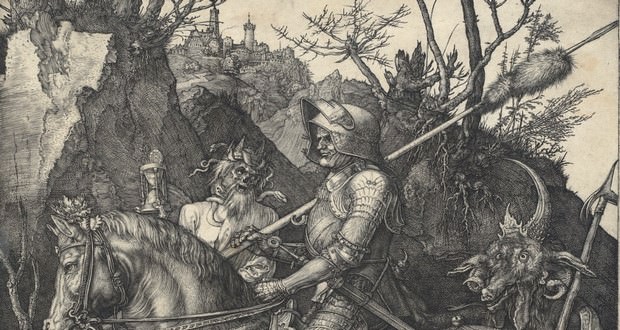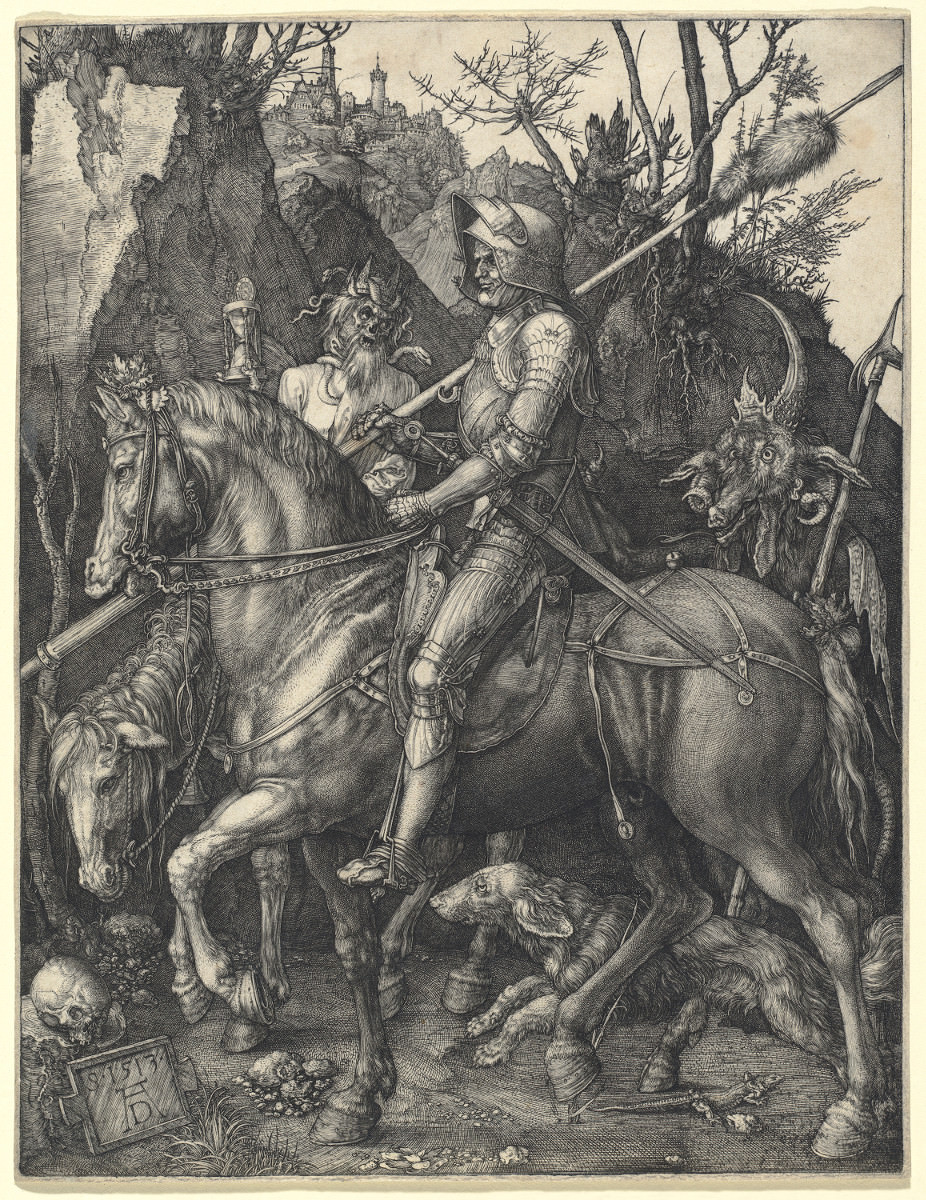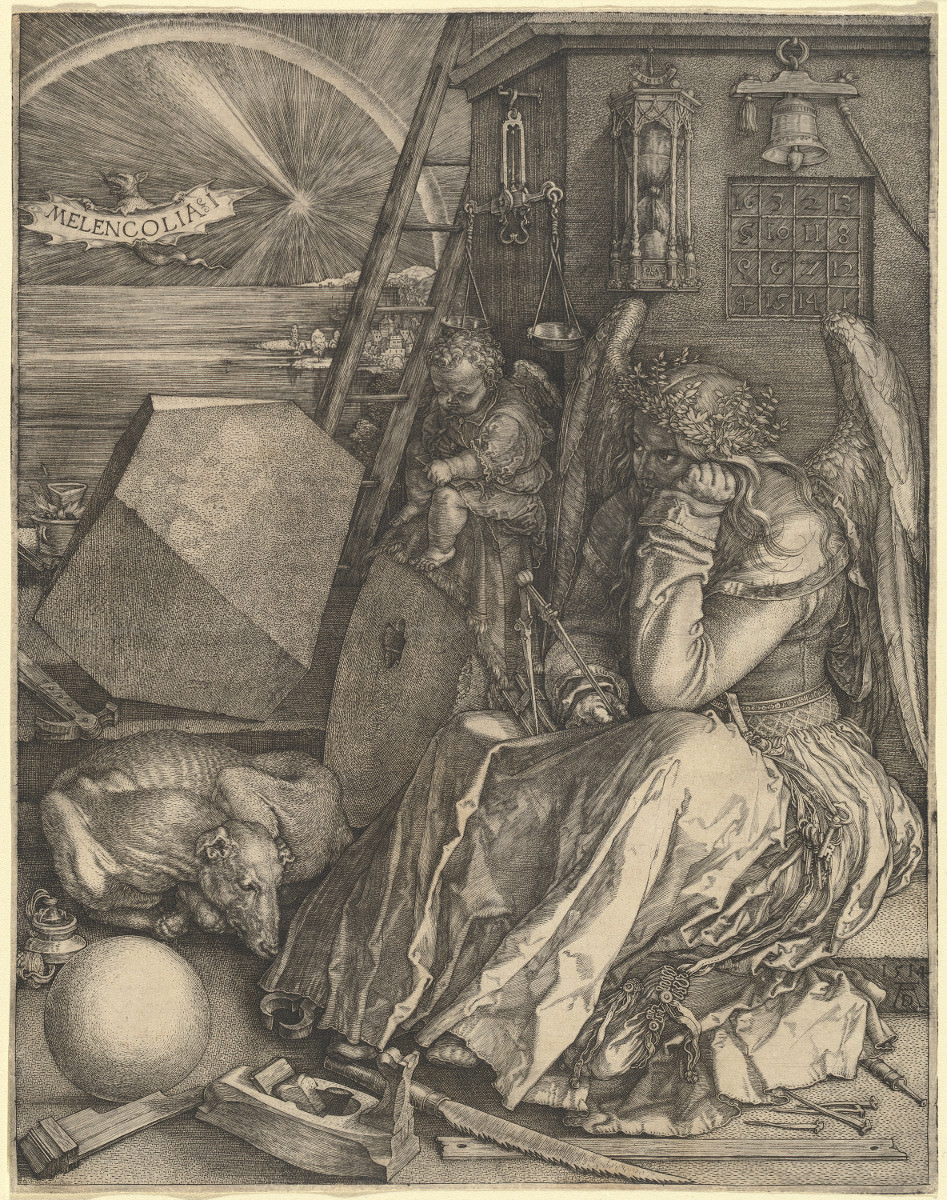
Dear readers, below, gladly share with you the key insights I had with the paintings of Düher, how they affected me aesthetically and why so much intrigue me every time that they appreciate and give myself.
First of all, I dare say that perhaps Düher has been the most extraordinary painter of the wide history of art, although, in a way, his talent was partially overshadowed by other great Renaissance artists of his generation. If he wasn't the most exquisite and talented there ever was, It is certainly one of the most outstanding and, very possibly the most brilliant painter who has emerged in Germany.
I began to explore the universe Düher about two years ago, and the gateway to the works of this great genius was a grim picture, dated 1513, in which he portrayed death, the devil and rider together. When I saw this striking image for the first time, I was fascinated and instigated, trying to guess what kind of discussion and / or reflection could arise between such characters. That unexpected meeting: a deadly, death, itself, physically represented, and the devil, an old and familiar fellow human being. I wonder what one represents to the other? What a feel for each other? A certain death an hourglass and appears to be trying to show it to the knight, on the other hand, apparently (although haunted, suffocated, Maybe), persists in ignoring the two terrifying figures that surround and, abruptly interrupted his career. And that symbolic aspect: I think the devil and death, one way or another, always, although in different intensities and times, interrupt the journey of most humans, as, in the picture of Düher, coldly interrupted the path of knight. It is also possible to observe a skull on the floor (left of the image), in front of the rider, that may represent their inevitable fate - and would not be the mark of finitude that is ahead of our road, of our lives? More clearly speaking, skull, It seems to-me, expresses death, the end that is exposed in the way that man travels.
The curious and endless my speculations, They amounted to admiration for the incredible technical qualities of the painting of this great German artist, that are present not only in this painting in question, but also all other, which they have produced. Düher created works whose minute details are stunning. The die realistic drawings, it means, those in which he portrays objects based in the real world, such as, for example, a hare, lion, hands and soles, They have a remarkable harmony and a refined subtlety in every single aspect, and these features result in an incredible perfectionism, in such a way that the paintings appear to be real photographs. Düher's skill was immense and this kind of realistic production, highlights this fact. The painter, including, even wrote a book on geometry, demonstrating its affinity for perfection and attention forms, for balance and symmetry pictures.
Everything enchanted me this brilliant man! In addition to the realistic nature of drawings, there are certain mystical symbolism and celestial floating in much of their screens, although these elements are “hidden”, just waiting for the spectators try discloses-the (as I myself did above). As the German artist once wrote: "Only a barren mind does not have self-confidence to find the way of something that is beyond, dragging for some track spending, glad to imitate others and without the initiative to think of herself ".
“Melencolia I” (1514), for example, It is a real and attractive complex puzzles. Ever I come across with numerous and divergent interpretations of this work, but I believe that it is useless to try to unravel it. There are two central angelic figures in the picture. There is also construction materials around the environment. In addition, note that one of the heavenly beings carries a key. Hanging on the wall are a square numbers coping, and an hourglass. You can also notice a third object: a scale (that binds, including, with one of the signs of the zodiac – libra, meaning the balance), plus a ladder. There are still some geometric figures filling the screen environment.
Note that performed above a purely physical description, and is extremely dificultoso speculate whether there is logical connection between the above elements (that is, if there is chaining, if there was a fundamental idea in Düher connects them to each other and give them meaning), or whether it is just a lot of items intuitively stripped of disjointed form. Were the sacred spirits, a prelude of melancholy? Do these beings are the architects of this feeling that plagues men?
In the magic square (which has become well known), you can see that the sum of all horizontal or vertical rows, curiously culminates number 34. This result is also obtained a sum made on the diagonal as well as in various other combinations. In addition, It is somewhat complicated to make assumptions. As already mentioned, there are several interpretations of this readings and. can, for example, be a reference to a date a biblical passage or else. Certainly this kind of speculation it is more the mathematical and lovers of numerology. Do angels are hated for their creations or divine destinations? They are surrounded by instruments and tools, but they seem tired and bored. Or were they symbolize the very human in their times of trouble? The fact is that this mysterious and complex work of Düher, that is as hypnotic and engaging, certainly never will be unveiled in its fullness, and this makes it extremely fascinating.
Sign up to receive Event News
and the Universe of Arts first!
What we see today in relation to the legacy of Düher, It is a sequence of subjective attempts to interpret the symbols arranged on its various screens, but there is no final conclusion, objective and plausible, and this situation provides an abstract and mysterious atmosphere to the legacy of this great German painter. There are several ways and possibilities of interpretation that can be taken, but in general, Dürer productions remain one of the great mysteries of art history.
.
.
JULIANA VANNUCCHI
Sorocaba – São Paulo
Facebook Profile | Facebook Fan Page
Website Philosophical Collection
E-mail: ju.vannucchi@hotmail.com
Group on Facebook | Instagram
LinkedIn | Facebook | Twitter



